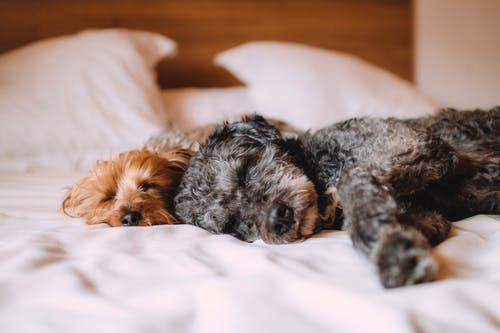
As a caring fur parent, you want the best for your pet, and understanding the process behind Veterinary Surgery can help ease your worries. In this article, we’ll dive into a step-by-step guide and explore what happens in veterinary surgeries that will equip you with essential information for your pet’s wellbeing.
Types of Veterinary Surgery
Commonly Performed Surgeries
There are several types of veterinary surgeries performed on pets, such as spaying and neutering, dental cleanings, lump removals, and wound repairs, among others. These surgeries are common and usually have a low risk of complications.
Specialized Surgeries and Procedures
Some pets require more specialized surgeries, like orthopedic, soft tissue, or neurological procedures. These surgeries require a more skilled veterinary surgeon to perform, and the risk of complications may vary depending on the procedure.
Pre-Surgical Examination and Evaluation
Veterinary surgeries start well before your pet is on the operating table. A pre-surgical examination is vital to ensure your pet is healthy enough to undergo anesthesia and surgery.
Veterinary Examination
During the exam, the vet will check your pet’s heart, lungs, and overall health. They might also inquire about your pet’s medical history, vaccinations, or any previous surgeries.
specialists might be involved in the evaluation process, particularly if your pet has underlying health conditions or specific concerns that could impact the surgery.
Lab Tests and Imaging
Your veterinarian might recommend blood tests, X-rays, ultrasounds, or other diagnostic imaging procedures before surgery. These tests provide valuable information about your pet’s overall health and any potential surgical risk factors.
Prepping for Vet Surgery
Preparing Your Pet
Before surgery, your pet might need to go through some specific preparations. This may include fasting for 12 hours before the procedure and refraining from drinking water a few hours before the surgery. Make sure to follow your vet’s recommendations.
Medications and Supplements
The vet may provide instructions about any medications or supplements your pet takes before surgery. Some pets might need to stop taking certain medications, while others may need to receive medications adjusted before surgery.
Anesthesia in Veterinary Surgery
Anesthesia is an essential part of veterinary surgery to ensure your pet’s comfort and the success of the procedure.
Types of Anesthesia
There are different types of anesthesia, including local, regional, and general anesthesia. The type used during surgery will depend on the procedure and your pet’s specific needs.
Monitoring During Anesthesia
During the procedure, the anesthetic team will monitor your pet’s vital signs, such as heart rate, blood pressure, and oxygen levels. This monitoring allows the team to make any necessary adjustments to the anesthesia and maintain your pet’s stability during the surgery.
Risks and Considerations
Although anesthesia is relatively safe, some pets might face risks from the anesthesia itself. The pre-surgical examination and evaluation help minimize these risks by identifying any potential concerns.
The Surgical Procedure
Preparation of the Surgical Site
Before surgery, the veterinary team will shave the hair around the surgical site and cleanse the area with antiseptic to minimize the risk of infection.
Sterile Technique
The surgical team follows strict sterile techniques to prevent contamination during surgery. They’ll wear gloves, masks, gowns, and caps, and the surgical instruments will be sterilized.
Surgery Process
The actual surgery varies based on the procedure being performed. The veterinary surgeon will use their expertise to complete the surgery effectively, while the support team will assist with any necessary tasks.
Surgical Monitoring
During surgery, the veterinary team continuously monitors your pet’s vital signs, such as heart rate, blood pressure, and oxygen levels. This monitoring ensures your pet remains stable and in optimal condition throughout the surgery.
Post-Operative Care
After the surgery, your pet will recover in a post-operative care area where the team will continue monitoring their vitals.
Waking Up from Anesthesia
Your pet will gradually wake up from anesthesia, and the veterinary staff will monitor their progress, ensuring they’re comfortable and stable. In the section on vet vaccinations, pet owners should consider facilities with comprehensive services, like pet vaccinations at Yolinda Animal Hospital, which may include both vaccination and surgical procedures.
Pain Management for Pets
Veterinarians provide pets with pain medications to ensure they remain comfortable during the recovery process.
Post-Operative Medications and Treatments
Some pets may receive additional medications or treatments following surgery, such as antibiotics to prevent infection.
Recovering From Vet Surgery
Your pet’s recovery begins right after the surgery and includes at-home care.
Discharge Criteria
Before releasing your pet, the veterinary team will make sure your pet is stable and provide you with detailed care instructions.
At-Home Care after Surgery
Once your pet is home, you’ll need to provide them with a comfortable, safe environment for their recovery. Ensure they get plenty of rest and follow any specific instructions from the vet, like wound care or medication administration.
Potential Surgical Complications
While most veterinary surgeries are successful, potential complications can arise. Your vet will discuss the risks and provide you with warning signs to look for during recovery.
Tips for Fur Parents
As a fur parent, remember that communication with the veterinarian is vital, not only during the pre-surgery phase but also during recovery. Explore any concerns or questions you have, and never hesitate to connect with the vet if you notice anything unusual during recovery.
Conclusion
Understanding the process behind veterinary surgery can help put your worries at ease. This comprehensive guide helps you prepare for your pet’s procedure, and remember that you are not alone – your pet’s vet will be your ally throughout the process, providing essential guidance every step of the way.








